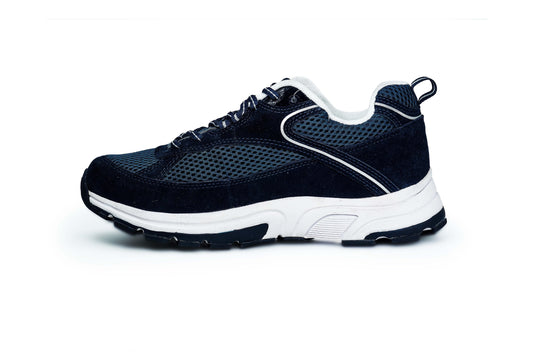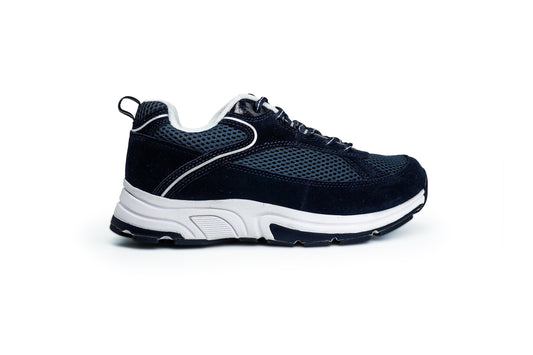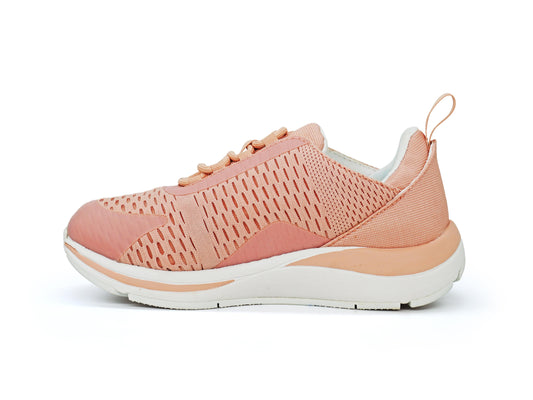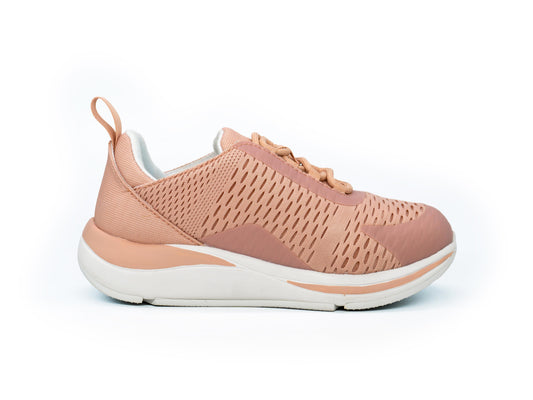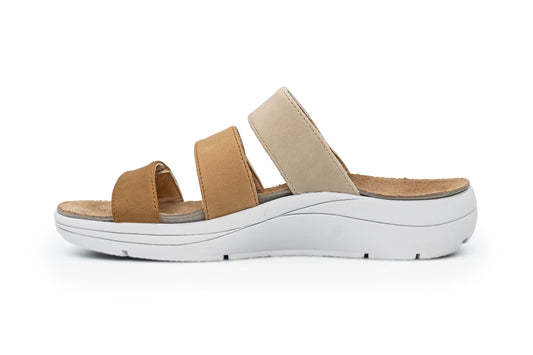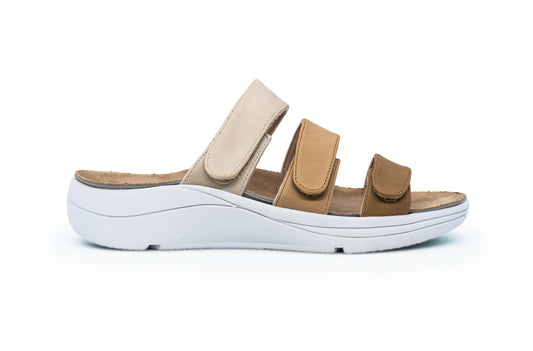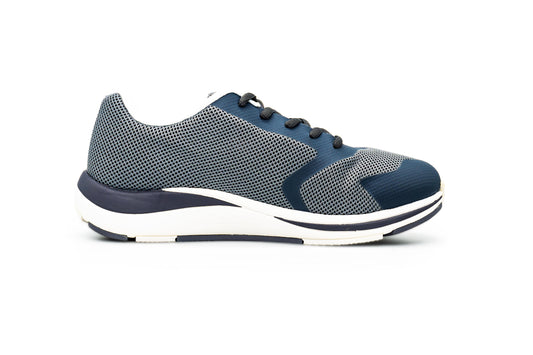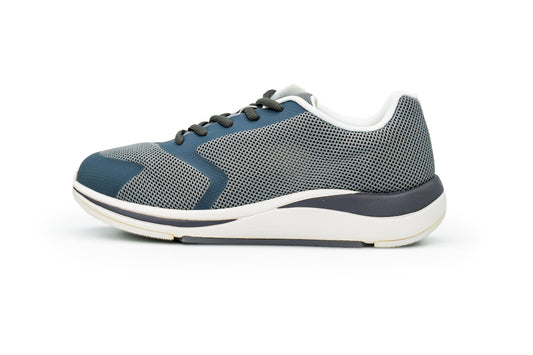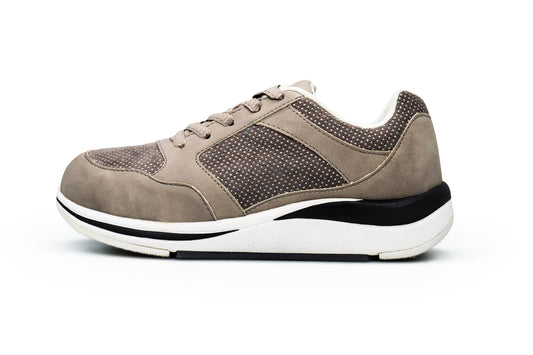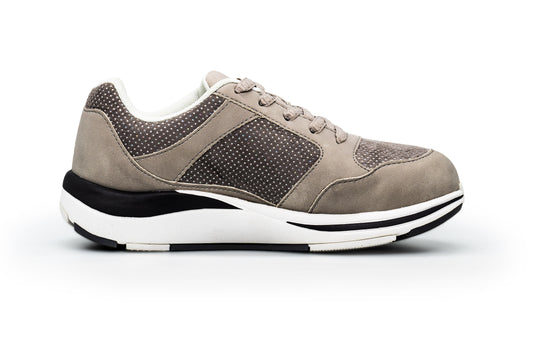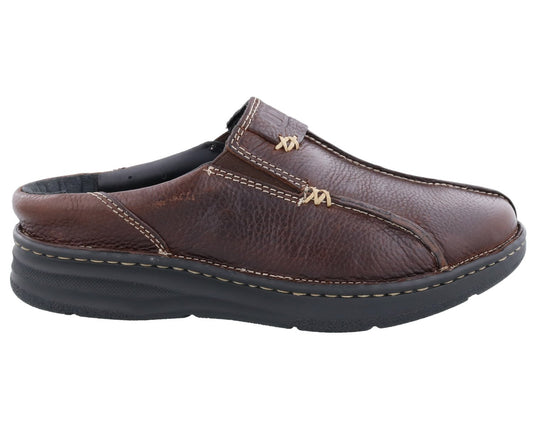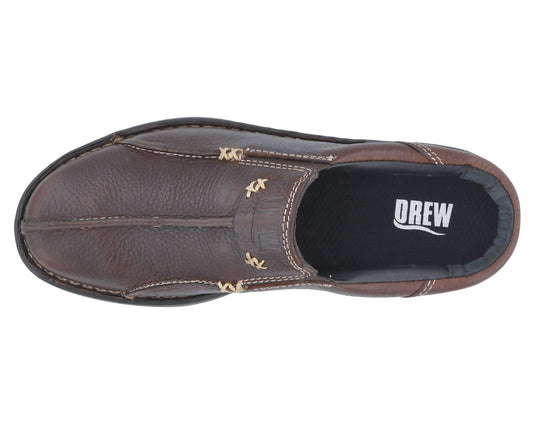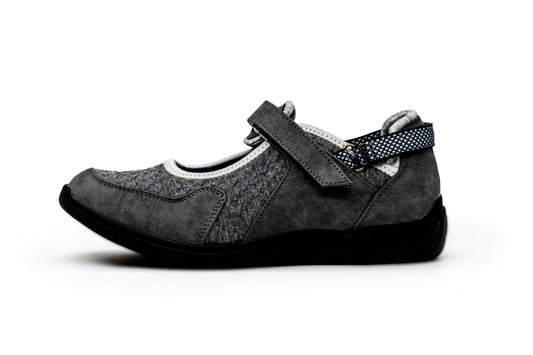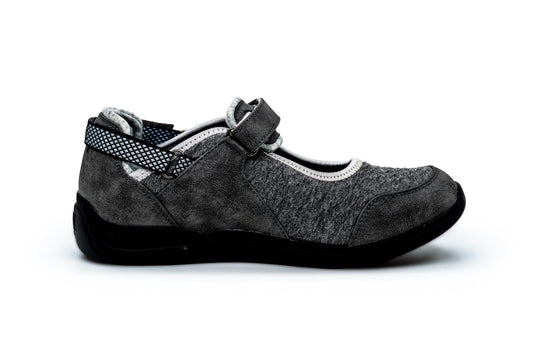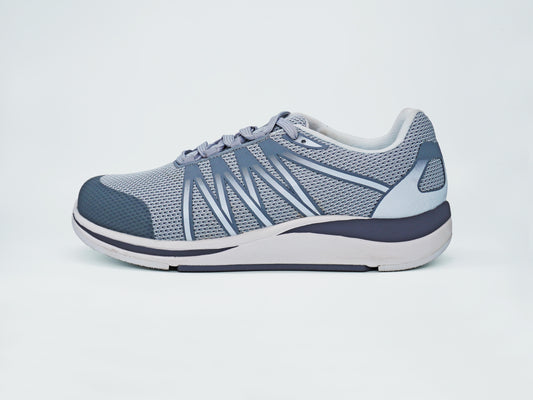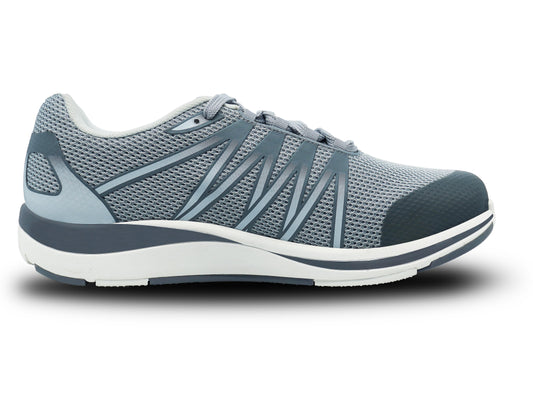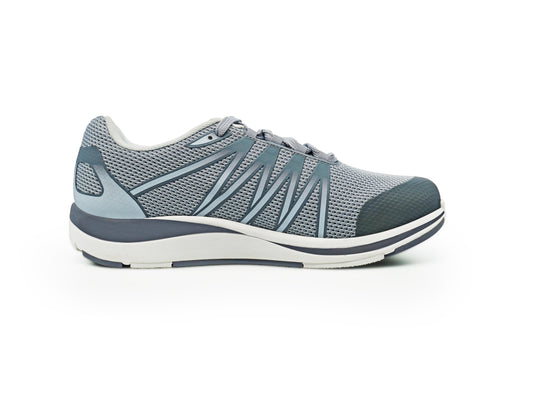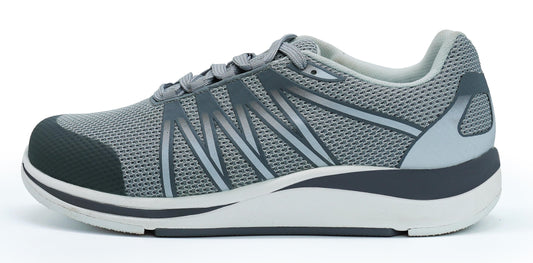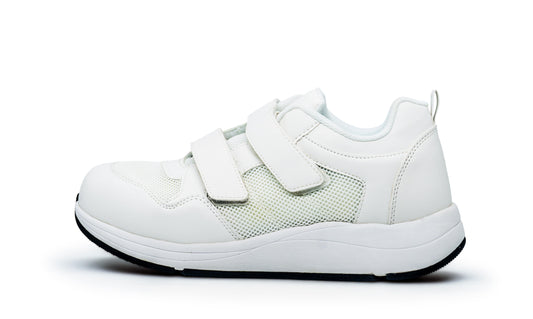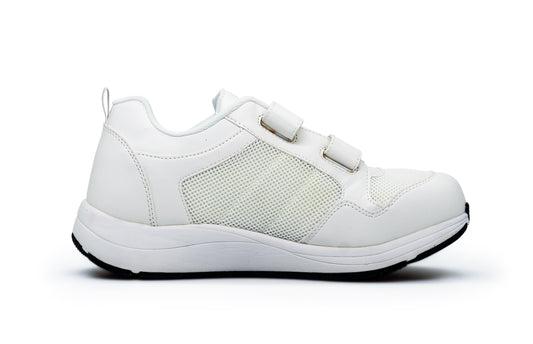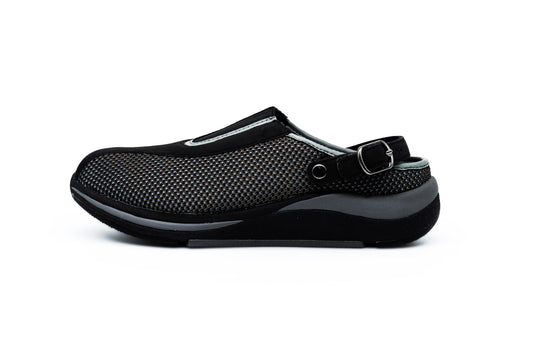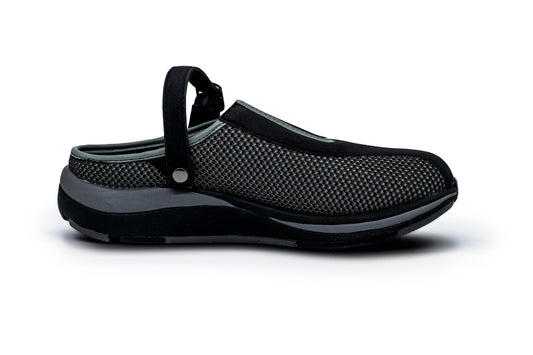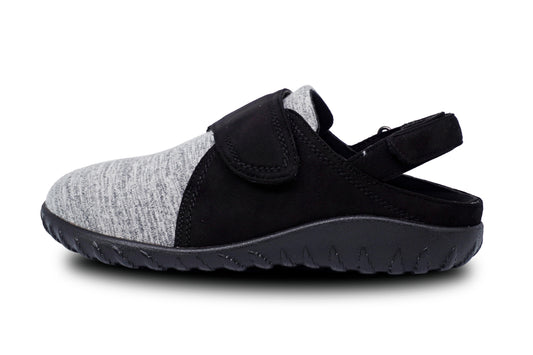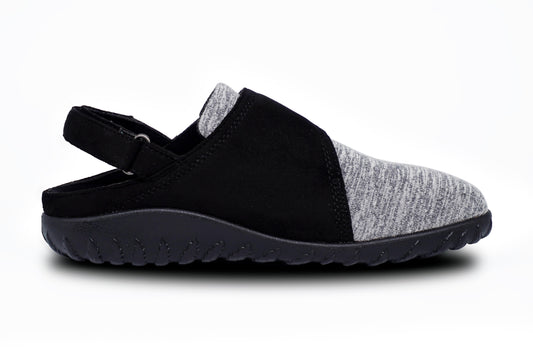-
Vendor: MENS
AARON Diabetic & Orthopedic Athletic Shoes - Mens - Navy Suede/Mesh
Walk in confidence knowing Drew Aaron only available exclusive at DiabeticShoe.in offers the proprietary Plus Fitting System® with two removable insoles plus all the therapeutic benefits Drew is famous for. With shock-absorbing inserts, flared outsoles, firm heel counters and Drilex® linings to wick away...- ₹ 11,695
₹ 12,995- ₹ 11,695
- Unit price
- / per
-
Navy Suede/Mesh
-
Vendor: WOMENS
SPRINTER Diabetic & Orthopedic Athletic Shoe Rose - Womens - Rose Combo
The Sprinter women's lace-up sneaker by Drew only available exclusively at Diabeticshoe.in features our Walk Right Technology Insole and is engineered for protection and superior comfort. A slip-resistant outsole will keep you on your feet. The high rebound EVA midsole provides shock absorption to...- ₹ 11,695
₹ 12,995- ₹ 11,695
- Unit price
- / per
-
Rose Combo
-
Grey Mesh Combo
-
Vendor: WOMENS
SAWYER Diabetic & Orthopedic Sandal - Womens - Blue Combo
Sawyer womens sandals by Drew® at DiabeticShoe.in combine an updated modern look with a hard-to-find removable insole. The removable Walk Right Technology™ footbed makes Sawyer one of the most comfortable women's sandals around! Featuring a lightweight outsole and three hook and loop adjustable straps,...- ₹ 8,995
₹ 10,995- ₹ 8,995
- Unit price
- / per
-
Blue Combo
-
Natural Combo
-
Vendor: MENS
STABLE Diabetic & Orthopedic Walking Shoes - Mens - Grey Mesh
The name says it all. The Stable features our proprietary Drew with Walk Right Technology™ in a men's athletic sneaker/walking shoe with superior support and comfort. A slip-resistant outsole will keep you connected with the ground. The high rebound EVA midsole provides shock absorption...- ₹ 10,795
₹ 11,995- ₹ 10,795
- Unit price
- / per
-
Grey Mesh
-
Vendor: WOMENS
CHIPPY Diabetic & Orthopedic Athletic Shoes - Womens - Grey Combo
Drew Chippy exclusively available at Diabetic Shoe India is our most popular casual shoes for women offers a great, new look for Drew. Chippy shoes are one of the industry's few walking shoes with double depth and two removable insoles that can accommodate prescribed...- ₹ 10,795
₹ 11,995- ₹ 10,795
- Unit price
- / per
-
Grey Combo
-
Vendor: MENS
JACKSON Diabetic & Orthopedic Sandal - Mens - Brown Pebbled Leather
One step into this clog, and you'll feel like you're walking on clouds. Great-looking tumbled leathers make Drew® Jackson the most requested clog in the industry. available exclusive at DiabeticShoe.in These Drew men's shoes define quality, comfort, support and stability. Drew Jackson are fully...- ₹ 11,695
₹ 12,995- ₹ 11,695
- Unit price
- / per
-
Brown Pebbled Leather
-
Vendor: WOMENS
BUTTERCUP Diabetic & Orthopedic Sandal - Womens - Grey Combo
The Drew® Buttercup available in India exclusively at DiabeticShoe.in is our best orthopedic shoe yet ! This popular women's shoe offers beautiful, detailed styling with the convenience and comfort of an adjustable hook and loop closure at the top of the foot with a detachable strap...- ₹ 11,695
₹ 12,995- ₹ 11,695
- Unit price
- / per
-
Grey Combo
-
Vendor: MENS
PLAYER Diabetic & Orthopedic Athletic Shoes - Mens - Grey Mesh
The men's Player offers Drew with Walk Right Technology™ and is engineered for protection and superior comfort and support only avaiable to buy at Diabetic Shoe India. A slip-resistant outsole will keep you on your feet. The high rebound EVA midsole provides shock absorption...- ₹ 10,795
₹ 11,995- ₹ 10,795
- Unit price
- / per
-
Grey Mesh
-
Vendor: WOMENS
BALANCE Running Shoes - Womens - Grey Mesh
The Balance women's athletic shoe features our Walk Right Technology™ Insole and is engineered for protection and superior comfort. A slip-resistant outsole will keep you on your feet. The high rebound EVA midsole provides shock absorption to reduce foot and leg fatigue. Complete with...- ₹ 10,795
₹ 11,994- ₹ 10,795
- Unit price
- / per
-
Grey Mesh
-
Vendor: MENS
CONTEST Diabetic & Orthopedic Sneaker- Mens - White Combo
The Contest by Drew men's double hook and loop sneaker is engineered for superior comfort exclusively available to buy from Diabetic Shoe India. A slip-resistant outsole will keep you sure on your feet. The high rebound EVA midsole provides shock absorption to reduce foot...- ₹ 10,795
₹ 11,995- ₹ 10,795
- Unit price
- / per
-
White Combo
-
Vendor: WOMENS
PURSUIT Slip-On Sneaker - Womens - Black Mesh Combo
Drew's Pursuit slip-on sneaker exclusively available at Diabetic & Orthopedic Shoe India for women is a multi-functional shoe designed with the utmost comfort in mind. Pursuit can be slipped on with ease and can be worn with or without the ankle strap. It's extremely...- ₹ 9,895
₹ 11,995- ₹ 9,895
- Unit price
- / per
-
Black Mesh Combo
-
Vendor: WOMENS
BREEZY Slipper Footwear - Womens - Black Microsuede/Stretch
Exclusive textures and comfortable design is a smash success in the womens Breezy slip-on by Barefoot Freedom® by Drew® only available exclusive at DiabeticShoe.in. Adjustable hook and loop closure at the heel and vamp allow for a customized fit. Stretch fabric along with a supportive,...- ₹ 9,995
₹ 10,995- ₹ 9,995
- Unit price
- / per
-
Black Microsuede/Stretch
Trending Now
Popular Products
Vendor:
MENS
AARON Diabetic & Orthopedic Athletic Shoes - Mens - Navy Suede/Mesh
Walk in confidence knowing Drew Aaron only available exclusive at DiabeticShoe.in offers the proprietary Plus Fitting System® with two removable insoles plus all the therapeutic benefits Drew is famous for. With shock-absorbing inserts, flared outsoles, firm heel counters and Drilex® linings to wick away...
- ₹ 11,695
₹ 12,995- ₹ 11,695
- Unit price
- / per
-
Navy Suede/Mesh
Vendor:
WOMENS
SPRINTER Diabetic & Orthopedic Athletic Shoe Rose - Womens - Rose Combo
The Sprinter women's lace-up sneaker by Drew only available exclusively at Diabeticshoe.in features our Walk Right Technology Insole and is engineered for protection and superior comfort. A slip-resistant outsole will keep you on your feet. The high rebound EVA midsole provides shock absorption to...
- ₹ 11,695
₹ 12,995- ₹ 11,695
- Unit price
- / per
-
Rose Combo
-
Grey Mesh Combo
Vendor:
WOMENS
SAWYER Diabetic & Orthopedic Sandal - Womens - Blue Combo
Sawyer womens sandals by Drew® at DiabeticShoe.in combine an updated modern look with a hard-to-find removable insole. The removable Walk Right Technology™ footbed makes Sawyer one of the most comfortable women's sandals around! Featuring a lightweight outsole and three hook and loop adjustable straps,...
- ₹ 8,995
₹ 10,995- ₹ 8,995
- Unit price
- / per
-
Blue Combo
-
Natural Combo
Neuropathy
Neuropathy is a condition that affects the nerves, often causing pain, numbness, and tingling sensations, particularly in the feet and hands. Managing neuropathy requires specialized care, especially when it comes to footwear. At DiabeticShoe.in, we understand the challenges of living with neuropathy, so we offer a range of shoes designed to provide comfort and support.
Our neuropathy shoes feature soft, seamless interiors to prevent irritation and extra cushioning to reduce pressure on sensitive areas. With wider widths and adjustable closures, our shoes accommodate swollen or sensitive feet. Whether you're looking for neuropathy sandals, shoes, or slippers, our collection prioritizes both comfort and style.
Experience relief and support with DiabeticShoe.in's neuropathy footwear, crafted with your comfort in mind. Explore our curated collection at DiabeticShoe.in and confidently stride through life where comfort and fashion coalesce seamlessly. Deepen your understanding of foot health with insightful blogs, such as the Foot Conditions Resource Centre, Orthopedic Footwear Research Centre, and more.
DiabeticShoe is the exclusive dealer of Drew Orthotics, a well-known American-prescribed orthotics brand.


Sidebar
Why Choose Orthopedic & Diabetic Shoes?
Orthopedic & diabetic shoes combine soft, seamless interiors with supportive orthotic technology to protect sensitive feet from blisters, pressure, and friction. With added depth, cushioned soles, and a roomy fit, these shoes provide relief while helping to prevent foot conditions commonly associated with diabetes.
Key Features:
- Seam-Free, Padded Interiors: Each shoe is designed with a seamless lining and extra padding to prevent irritation and friction, making them ideal for individuals with sensitive feet or neuropathy.
- Orthotic Insoles with Arch Support: Built-in orthotic insoles provide gentle arch support and improve foot alignment, helping to alleviate pain from common foot issues like plantar fasciitis and flat feet.
- Lightweight, Shock-Absorbing Soles: The cushioned soles absorb impact with each step, reducing pressure on the feet, knees, and lower back. This feature is especially beneficial for individuals with diabetes, as it helps prevent undue stress on the feet.
- Wide Toe Box and Extra Depth: Designed with a spacious toe box, Orthopedic & diabetic shoes allow natural toe movement and accommodate swollen feet or foot deformities, providing a comfortable, pressure-free fit.
- Adjustable Fit Options: Many styles feature adjustable closures, such as Velcro straps or laces, allowing for a personalized fit that accommodates swelling and provides extra stability.
- Reinforced arch support: Insoles are designed to support the arch, maintain proper foot alignment, and relieve pressure on joints.
- Firm heel counter: A stiff, supportive back section prevents the heel from sliding around in the shoe, which adds stability and motion control.
- Durable construction: These shoes are built to be sturdy and provide long-lasting support to the foot's structure.
- Soft, non-binding materials: The shoe's uppers are made from soft, flexible, and often stretchy materials that conform to the foot's contours and prevent constriction, which is important for circulation
- Breathable materials: Fabrics like leather and mesh promote air circulation, keeping the feet dry and reducing the risk of fungal infections.
- Protective, non-skid sole: The sturdy outsole shields the foot from sharp objects, and the non-slip design reduces the risk of falls.
- Adjustable straps: Hook-and-loop (Velcro) straps or laces allow for easy adjustments to accommodate fluctuations in foot swelling throughout the day
Benefits of Orthopedic & Diabetic Shoes:
Both orthopedic and diabetic shoes are therapeutic footwear designed to protecy and support the feet, but they serve different primary purposes. Orthopedic shoes correct biomechanical foot issues, while diabetic shoes are specifically engineered to prevent complications in diabetic patients who are prone to foot injuries and ulcers.
- Enhanced Foot Protection: Soft, seamless interiors and cushioned support protect sensitive feet from blisters, pressure, and irritation, promoting better foot health.
- Pain Relief and Stability: Orthotic insoles and ergonomic design provide the support needed to alleviate pain and ensure stability, reducing the risk of slips and falls.
- Long-Lasting Comfort: With shock-absorbing materials and a comfortable, supportive fit, Orthopedic & diabetic shoes offer the all-day comfort you need to stay active and pain-free.
- Improve support and alignment: They feature reinforced arch support, firm heel counters, and cushioned insoles that help maintain proper alignment of the feet and ankles. This also helps with issues like flat feet and high arches.
- Reduce pain: Orthopedic footwear is effective at relieving foot pain caused by conditions like plantar fasciitis, heel spurs, bunions, and arthritis. The extra cushioning helps absorb shock and minimizes pressure on sensitive areas.
- Enhance mobility: By providing stability and support, these shoes make it easier and more comfortable to walk, stand, and move. This is especially beneficial for those with arthritis, injuries, or other conditions that affect gait.
- Accommodate foot deformities: Features like wide toe boxes reduce friction and pressure on bunions and hammertoes, preventing discomfort and the condition from worsening.
- Distribute pressure: The design ensures that weight is evenly distributed across the foot, which reduces stress on joints and other key areas.
- Improve overall posture: By promoting better foot and ankle alignment, orthopedic shoes can have a positive effect on your posture, which in turn can relieve pain in the knees, hips, and back.
- Prevent foot ulcers: Diabetes can cause nerve damage that reduces sensation in the feet. A minor cut or blister can go unnoticed and develop into an ulcer. Diabetic shoes have seamless interiors and soft, non-binding uppers to eliminate friction and pressure points that can lead to skin breakdown and ulcers.
- Protect against injury: Stiff toe boxes and durable construction shield feet from accidental bumps or impacts, which is crucial for those with reduced sensation who might not feel an injury.
- Enhance circulation: Designed with extra depth and wide toe boxes, diabetic shoes promote healthy blood flow by preventing constriction. The reduced pressure on the feet helps improve circulation, which is often poor in individuals with diabetes.
- Accommodate foot deformities and swelling: The roomy design provides space for common diabetes-related foot changes, such as swelling, bunions, and hammertoes. Adjustable closures can accommodate daily fluctuations in foot size.
- Reduce risk of amputation: By preventing and managing foot injuries and infections, proper therapeutic footwear is a critical tool for reducing the risk of amputation associated with severe diabetic foot complications.
- Ensure optimal foot health: Regular use of diabetic shoes, along with daily foot checks and hygiene, is a key part of a comprehensive foot care plan for diabetics, leading to enhanced mobility and independence.
Ideal for Everyday Activities and Long Hours
Orthopedic & diabetic shoes are crafted to support you through any daily activity, from work to casual outings:
- Home and Daily Wear: Perfect for relaxing or light walking, these shoes keep your feet cushioned and comfortable all day.
- Errands and Social Outings: With a stylish yet practical design, Orthopedic & diabetic shoes allow you to stay active and look great without compromising on foot health.
- Protect your feet with Orthoshoes diabetic shoes, designed to provide gentle, reliable support and comfort for sensitive feet. Discover footwear that’s as protective as it is comfortable.
Shop the collection today and step into comfort and peace of mind!
FAQs
What is the main cause of neuropathy?
Neuropathy is caused by damage to the nerves and can result from conditions like diabetes, autoimmune diseases, infections, kidney and liver disorders, and thyroid issues. Other causes include nutritional deficiencies, heavy metal and toxin exposure, alcoholism, cancer, and certain medications. Physical trauma, repetitive motions, and inherited conditions can also damage nerves and lead to neuropathy.
What is the recovery time for neuropathy?
In mild cases, patients may experience relief within weeks or months after starting appropriate treatment. However, in severe neuropathies, recovery may take years, and in some cases, the damage may be irreversible.
What is the best treatment for neuropathy?
Consult a doctor as soon as you experience symptoms: to get a diagnosis and start a customized treatment plan.
Work with your healthcare team: to manage underlying conditions like diabetes, which are common causes of neuropathy.
What helps with this condition?
Lifestyle Changes:
Managing blood sugar levels for diabetic neuropathy is crucial for symptom improvement.
Medications:
Pain relievers: Over-the-counter options or prescription drugs, including antiseizure medications and antidepressants, can help manage pain.
Topical treatments: Capsaicin cream or patches, derived from chili peppers, can provide pain relief by blocking pain signals.
Therapies:
Physical and occupational therapists: can provide exercises to help maintain physical abilities and balance, notes Livestrong and Ask Doctor Jo.
Vitamins: can sometimes be used as part of a management plan.
What is neuropathy?
Neuropathy, or peripheral neuropathy, is a condition caused by damage or disease affecting the nerves outside of the brain and spinal cord. It can disrupt how these nerves send and receive signals, leading to pain, numbness, tingling, or muscle weakness. The symptoms and which parts of the body are affected depend on the type and location of the nerve damage.
Can neuropathy be cured or reversed?
In some cases, neuropathy can be reversed, especially if the underlying cause is addressed early. For example, if the cause is a vitamin deficiency, taking supplements may help. For diabetic neuropathy, tight control of blood sugar can prevent the condition from worsening. In many chronic cases, nerve damage cannot be cured, but treatment can manage the symptoms and prevent further progression.
How do I know which treatment is right for me?
It's important to consult with your doctor, who can determine the underlying cause of your neuropathy and create a personalized treatment plan. Different causes require different treatments, and what works for one person may not be effective for another. A doctor may refer you to a neurologist or pain specialist for further evaluation.
Are there any new or emerging treatments for neuropathy?
Yes, research into neuropathy treatments is a very active area, and several promising new and emerging therapies are being developed. They range from innovative medical devices to regenerative approaches like stem cell and gene therapy.
Advanced neurostimulation
Wearable devices
Regenerative therapies
- Stem cell therapy
- Gene therapy
- Targeted drug delivery
- Nanomedicine
- Anti-Nerve Growth Factor (NGF) antibodies
Where can I find shoes to help with my condition?They can be directly purchased and customised on our website. They are available in various designs suited for everyone.z
They can be directly purchased and customised on our website. They are available in various designs suited for everyone.
Recently Viewed Products
- Choosing a selection results in a full page refresh.

